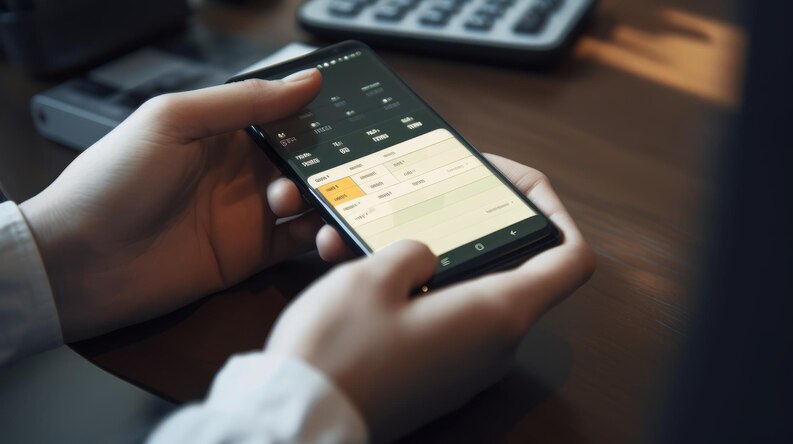Disbursement and Reimbursement in E-Invoicing: A Comprehensive Guide
Reimbursements refer to out-of-pocket expenses incurred by the payee during the course of rendering services or selling goods to the payer (i.e., Buyer). These expenses are subsequently reimbursed by the payer. Examples of such expenses include airfare, travel, accommodation, telephone charges, and photocopying costs. Disbursements, on the other hand, are out-of-pocket expenses incurred by the payer (i.e., buyer) and paid directly to a third party by the payee. These expenses are related to services rendered or the sale of goods by the payee to the payer. [...]
Periodic statements or bills
According to the Inland Revenue Board of Malaysia (IRBM), certain businesses, industries, and sectors practice the issuance of statements or bills to record multiple transactions between Supplier and Buyer over a set period (e.g., monthly, bi-monthly, quarterly, bi-annually, annually), instead of issuing individual invoices for each transaction . This practice is called periodic statements or bills. [...]
Self-billing E-Invoice
Overall of Self-billing E-invoice. When a sale or transaction is concluded, the Supplier issues an e-Invoice to recognize their income and as a record of the Buyer's spending (proof of expense). However, there are certain circumstances where another party, other than the Supplier, is allowed to issue a self-billed e-Invoice on behalf of the Supplier. This is known as a self-billing e-Invoice. [...]
E-invoicing for Employment Perquisites and Benefits
Employment Perquisites and Benefits. Individuals who are under a contract of service (i.e., employment) may have employee benefits provided by their employer. Employee benefits may include benefits in cash or in kind that an employee receives from an employer or third party as a result of being employed or performing work, such as: [...]
Certain expenses incurred by employees on behalf of their employer
Simplifying Employee Expenses: IRBM’s Concession. Employees often incur expenses on behalf of their employers, ranging from accommodation to telecommunication costs. Traditionally, employees submit expense claims with supporting documents to validate these expenses. However, with the introduction of e-Invoice, a new process has emerged. Under the e-Invoice system, employees are now required to request e-Invoices in their employer’s name as proof of expenses. [...]
Transactions that involve monetary payments to agents, dealers, or distributors
General Overview. Agents, dealers, and distributors are vital intermediaries in business supply chains. They connect manufacturers or service providers with consumers, earning a commission on each sale or service provided. When a Purchaser acquires goods or services from the Seller through an Agent/Dealer/Distributor, the Seller must issue an e-Invoice to the Purchaser to record the transaction. [...]
Profit Distribution: Understanding the Process and Requirements
Profit distribution is a crucial part of an organization’s financial operations. It involves allocating earnings to stakeholders such as shareholders, partners, and employees. Traditionally, companies issue dividend vouchers or warrants to distribute profits to shareholders. Other entities, like trusts and unit trusts, follow similar practices. However, with the implementation of e-Invoice in Malaysia, certain companies and taxpayers are now exempt from issuing self-billed e-Invoices for dividend distribution. This exemption will be periodically reviewed. [...]
Data Security and Privacy Monitoring by IRBM
A set of measures and practices to protect the confidentiality, integrity, and availability of MyInvois System’s data and transactions. Taxpayers will be authenticated using a unique identity, enabling them to perform authorized actions such as submitting, receiving, and requesting. MyInvois API utilizes OAuth for both user authorization and API authentication. This authentication and authorization process ensures that only authorized individuals have access to the system and can perform relevant actions within it. [...]
Debit Note and Credit Note in the E-Invoice Era
In the world of business and finance, Debit Notes (DN) and Credit Notes (CN) play a crucial role. But what exactly are they? And how do they function in the era of electronic invoicing? Let’s delve into these questions. Understanding Debit Notes A Debit Note is a document issued by a buyer to a seller, indicating the amount the buyer owes to the seller. It is used when the buyer needs to return goods received or when the seller undercharges the buyer. [...]
Understanding Reimbursements and Disbursements in E-Invoicing
In the world of e-invoicing, two terms often come up: reimbursements and disbursements. These terms refer to out-of-pocket expenses incurred during the course of rendering services or selling goods. Reimbursements refer to expenses incurred by the payee (i.e., the supplier) in the course of rendering services or selling goods to the payer (i.e., the buyer). These expenses, which are subsequently reimbursed by the payer, can include costs such as airfare, travel, accommodation, telephone, and photocopying charges. On the other hand, disbursements are expenses incurred by the payer and paid to a third party by the payee in connection with services rendered or goods sold. In other words, the payee pays these expenses on behalf of the payer. Currently, suppliers often include both reimbursements and disbursements in their invoices to buyers. [...]
Understanding the Issuance of Consolidated e-Invoices
In the world of digital transactions, e-Invoices have become a crucial part of business operations. However, there are instances where a buyer may not require an e-Invoice. In such cases, the supplier can issue a normal statement or bill to the buyer, similar to the current business practice. The supplier is allowed to aggregate these statements or bills to create and submit a consolidated e-Invoice for validation by the Inland Revenue Board of Malaysia (IRBM) in accordance with the current issuance period for statements or bills for the respective businesses. Upon aggregation of statements or bills, the supplier is required to create and submit a consolidated e-Invoice to IRBM for validation, within seven calendar days after the end of the billing period. [...]
Where the Buyer does not require an e-Invoice
The IRBM has exempted certain categories of taxpayers from the e-Invoicing process . These include: 1. Any Insurance Company 2. Banking Company including a Financial Institution, including a Non-Banking Financial Company (NBFC) 3. Goods Transport Agency (GTA) transporting goods by road in a goods carriage services 4. A registered person who supplies passenger transportation services 5. A registered person who supplies services by way of admission to the exhibition of cinematographic films in multiplex services 6. A Special Economic Zone unit 7. A department of government and local authority [...]











